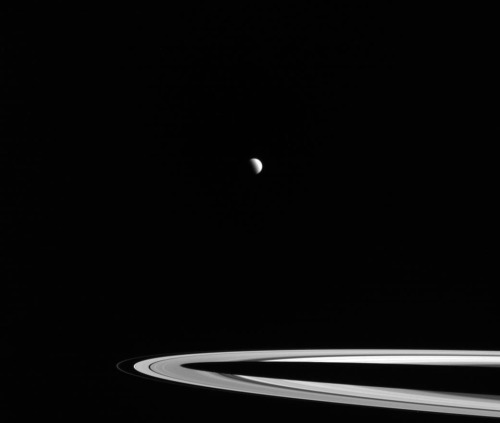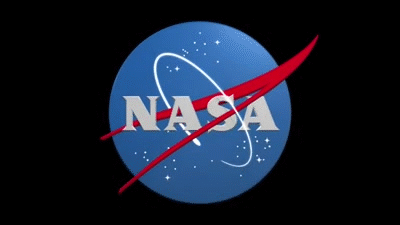NASA’s Message-In-A-Bottle: The Interstellar Constellation

NASA’s Message-In-A-Bottle: The Interstellar Constellation
The picture above represents one of the most beautiful things we’ve ever done.
Here’s a short thought experiment and story:
Somewhere one day a person, who may or may not be somewhat like you, might be looking through their telescope.
They might see something strange, approaching the planet.
They contact the authorities.
A mission is conceived to rendezvous with the object.
Astronauts carefully seal the mysterious asteroid in a large container and bring it back to the planet for scientists to study.
The whole world would be tense, waiting for news to break of what this strange thing is.
Its enigmatic shape gives it away as almost certainly not being natural.
Finally a nervous person approaches the media and crowds outside the lab.
With a shaking hand the person wipes sweat from their brow. They look up briefly before speaking, as if half expecting something to be there.
“The asteroid… is not from the solar system. It hurtled here at great speeds from a distant star.
It’s old. We’re not sure yet how old, but it’s clearly been a long time since it was home.
Inside the asteroid is a golden disc. We’ve managed to remove the disc. It has markings… and sounds etched into it.”
It was a little longer before the contents of the disc were deciphered. The scientists realized that the strange 14-branches of lines on the disc were binary. Yes or no. The simplest language in the universe, and a mathematical one.
A language that might be used to communicate with cosmic neighbors.
Across countless years and an unimaginable gulf of empty darkness, something was telling us, “Yes, yes, yes, no, no, yes, no, yes, no, yes, no, no, yes, yes, no, yes, yes, no…”
But yes to what? No to what?
The media exploded when an astronomer announced the binary series and the lengths of the branches corresponded exactly to the fingerprint-like beacons of 14 pulsars.
Around the world researchers mapped out where the center of the constellation should be, where the center of the 14 branches from their perspective night sky was.

They knew almost immediately but didn’t want to believe.
The star in the center of the constellation, the place where this message came from…
A news anchor looked into a camera, a somber look on their face:
“Astronomers have triangulated the location of the alien spacecraft. It came from a distant star which you can see in your telescopes. It’s the large red one.
It’s pretty to us but was a very different sort of star when this message was sent to us. Our space telescopes have confirmed that there’s a rocky planet in orbit around the star… there’s no atmosphere on it now as the star’s growth has boiled away any atmosphere there might have been.
Could those aliens still be alive somehow? Did they survive the incineration of their home?
As much as we ask these questions all we’ve got are the recordings they left on a sturdy golden record.
When played we hear strange sounds in an alien tongue. Deciphered, the recording reads,
“Hello, from the children of planet Earth…””
This story, believe it or not has already begun.
A few decades ago, NASA, working with Dr. Carl Sagan compiled a golden record to go aboard the Voyager spacecrafts.
Voyager 1 launched from Earth in 1977. It left the solar system and entered interstellar space in 2013.
In 1 billion years, that golden record will still be readable and the sounds engraved thereon still readable.
NASA used the unique, lighthouse-like rhythms of specific pulsars to generate a map, a sort of interstellar constellation that, no matter where in the Milky Way you are, will always point to our Sun at the center.
It’s a beautiful message. For a billion years the sounds of children speaking across the universe will survive. For a billion years the sounds of a heartbeat of someone in love will be carried from star to star.
That heartbeat, that love, will flow across the cosmos for a billion years.
For a billion years our interstellar message-in-a-bottle will drift among the current of starlight, perhaps until one day a person, who may or may not be somewhat like you, might look through their telescope and see a strange asteroid drifting towards their planet…
(Image credit: NASA)
More Posts from Lanas-own-blog and Others

NGC 6995.
Credit: Paul Andrew






An Adaptable Species: Part 2 of 4 (Part 1) Episode 11: The Immortals, Cosmos: A SpaceTime Odyssey



Buzz Aldrins self-portrait during Gemini 12 with the Earth reflecting off his visor, 12 November 1966
js

Hundreds of you sent in questions for my live conversation with three astronauts and NASA’s chief scientist on Tuesday. Thanks! The most common question was: “What happens when you get your period in space?”
I didn’t end up asking this question because
a) the question itself has a lot of historical baggage b) the answer is pretty boring
But because people seemed genuinely curious, I decided to answer it here.
First, a bit of history…
In the early days of space flight, menstruation was part of the argument that women shouldn’t become astronauts.
Some claimed (1) that menstruation would effect a woman’s ability, and blamed several plane crashes on menstruating women. Studies in the 1940s (2,3) showed this was not the case. Female pilots weren’t impaired by their periods. But the idea wouldn’t die. In 1964, researchers from the Women in Space Program (4) still suggested (without evidence) that putting “a temperamental psychophysiologic human” (i.e. a hormonal woman) together with a “complicated machine” was a bad idea.
Others raised concerns about hypothetical health risks. They feared that microgravity might increase the incidence of “retrograde menstruation.” Blood might flow up the fallopian tubes into the abdomen, causing pain and other health problems. No one actually did any experiments to see if this really would be a problem, so there wasn’t any data to support or refute these fears.
Advocates for women in space argued that there had been a lot of unknowns when humans first went to space, but they sent men up anyway. Rhea Seddon, one of the first six women astronauts at NASA, recalled during an interview:
We said, “How about we just consider it a non-problem until it becomes a problem? If anybody gets sick in space you can bring us home. Then we’ll deal with it as a problem, but let’s consider it a non-problem.”
Just to give you a sense of the culture surrounding female astronauts back then, here’s an excerpt of a 1971 NASA report about potential psychological problems in space. Researchers Nick Kanas and William Fedderson suggest there might be a place for women in space:
The question of direct sexual release on a long-duration space mission must be considered. Practical considerations (such as weight and expense) preclude men taking their wives on the first space flights. It is possible that a woman, qualified from a scientific viewpoint, might be persuaded to donate her time and energies for the sake of improving crew morale; however, such a situation might create interpersonal tensions far more dynamic than the sexual tensions it would release.
Kanas, now an emeritus professor of psychology at UCSF, told me this was tongue-in-cheek — part of a larger discussion about the problem of sexual desire in space (5). Still, it’s surprising this language was included in an official NASA memorandum. Even advocates for women in space were caught up in this kind of talk. In a 1975 report for the RAND corporation, Glenda Callanen argues that women have the strength and intelligence to become astronauts. But here’s how she begins the report’s conclusion:
It seems inevitable that women are to be essential participants in space flight. Even if they were only to take on the less scientific parts of the space mission, or if they wished only to help “colonize” distant planets, their basic skills must still prepare them to perform countless new tasks.
In a culture where these statements were unremarkable, it’s easy to imagine that questions about menstruation weren’t purely motivated by scientific curiosity.
In 1983, 22 years after Alan Shepard became the first American to go to space, Sally Ride left earth’s atmosphere. She told an interviewer:
I remember the engineers trying to decide how many tampons should fly on a one-week flight; they asked, “Is 100 the right number?” “No. That would not be the right number.”
So what DOES happen when you get your period in space?
The same thing that happens on Earth! In the last three decades years of female space flight, periods in space have been normal — no menstrual problems in microgravity.
Notes:
RE Whitehead, MD. “Notes from the Department of Commerce: Women Pilots.” The Journal of Aviation Medicine 5 (Mar-Dec 1934):48.
RS Holtz, MD. “Should Women Fly During the Menstrual Period?” The Journal of Aviation Medicine 12 (Sept 1941):302.
J Cochrane. “Final Report on Women Pilot Program.” 38.
JR Betson and RR Secrest. “Prospective women astronauts selection program.” American Journal of Obstetrics and Gynecology 88 (1964): 421–423.
Kanas and Fedderson’s 1971 report went on to conclude: “Information regarding women during periods of stress is scanty. This lack, plus previously mentioned problems, will make it difficult for a woman to be a member of the first long-duration space missions. However, it is just as unlikely to think that women cannot adapt to space. Initial exploration parties are historically composed of men, for various cultural and social reasons. Once space exploration by men has been successfully accomplished, then women will follow. In preparation for this, more information should be compiled regarding the physiology and psychology of women under stressful situations.”


Titan with the rings of Saturn.
The NASA “Worm” Logo
Just like many organizations, the style and logos can change over time. You are probably most familiar with our “meatball” logo. No, unfortunately this does not refer to the delicious food. This logo (below) is our most popular symbol, and dates back to 1959.

But, we’ve also had other insignia that represented our organization throughout the years.
The “worm” logo (below) was used by the agency from 1975 until 1992. The organization wanted to create a more “modern” logo, which resulted in the unique type style of the “worm” logo.

Even though this logo was retired in 1992, the Graphics Standards Manual is still available online HERE.
You can also read up about the emblems, logos and insignia used by NASA throughout the years in a new e-Book available for free HERE.
Make sure to follow us on Tumblr for your regular dose of space:http://nasa.tumblr.com

-
 superpositionof3types liked this · 2 years ago
superpositionof3types liked this · 2 years ago -
 emiliosandozsequence reblogged this · 3 years ago
emiliosandozsequence reblogged this · 3 years ago -
 andrejupiter liked this · 4 years ago
andrejupiter liked this · 4 years ago -
 deus-phoenix reblogged this · 4 years ago
deus-phoenix reblogged this · 4 years ago -
 shnoopit liked this · 5 years ago
shnoopit liked this · 5 years ago -
 wise-delinquent reblogged this · 5 years ago
wise-delinquent reblogged this · 5 years ago -
 shadowhand-bastard reblogged this · 5 years ago
shadowhand-bastard reblogged this · 5 years ago -
 materialesreciclados reblogged this · 5 years ago
materialesreciclados reblogged this · 5 years ago -
 materialesreciclados reblogged this · 5 years ago
materialesreciclados reblogged this · 5 years ago -
 nicoducon liked this · 6 years ago
nicoducon liked this · 6 years ago -
 kreidenprinz reblogged this · 6 years ago
kreidenprinz reblogged this · 6 years ago -
 kreidenprinz liked this · 6 years ago
kreidenprinz liked this · 6 years ago -
 rachelle-12 liked this · 6 years ago
rachelle-12 liked this · 6 years ago -
 likealittleraccoonthing reblogged this · 6 years ago
likealittleraccoonthing reblogged this · 6 years ago -
 likealittleraccoonthing liked this · 6 years ago
likealittleraccoonthing liked this · 6 years ago -
 disapprovinghmm reblogged this · 6 years ago
disapprovinghmm reblogged this · 6 years ago -
 anotheranxiousgay liked this · 6 years ago
anotheranxiousgay liked this · 6 years ago -
 spookyking reblogged this · 6 years ago
spookyking reblogged this · 6 years ago -
 spookyking liked this · 6 years ago
spookyking liked this · 6 years ago -
 michael-rocket liked this · 6 years ago
michael-rocket liked this · 6 years ago -
 pavilionaguest-blog liked this · 6 years ago
pavilionaguest-blog liked this · 6 years ago -
 divermarv liked this · 6 years ago
divermarv liked this · 6 years ago -
 genocider-syo-is-still-my-queen liked this · 6 years ago
genocider-syo-is-still-my-queen liked this · 6 years ago -
 planet-jumping-warrior reblogged this · 6 years ago
planet-jumping-warrior reblogged this · 6 years ago -
 planet-jumping-warrior liked this · 6 years ago
planet-jumping-warrior liked this · 6 years ago -
 halfahundredcats liked this · 6 years ago
halfahundredcats liked this · 6 years ago -
 caricature-of-a-witch reblogged this · 6 years ago
caricature-of-a-witch reblogged this · 6 years ago -
 snoozy-red-panda liked this · 6 years ago
snoozy-red-panda liked this · 6 years ago -
 pigmalionizam liked this · 6 years ago
pigmalionizam liked this · 6 years ago -
 optimistichoundnerdbagel reblogged this · 6 years ago
optimistichoundnerdbagel reblogged this · 6 years ago -
 optimistichoundnerdbagel liked this · 6 years ago
optimistichoundnerdbagel liked this · 6 years ago -
 godmodliving liked this · 6 years ago
godmodliving liked this · 6 years ago -
 sharkspaceengine liked this · 6 years ago
sharkspaceengine liked this · 6 years ago -
 servingfordays-inmanyways liked this · 6 years ago
servingfordays-inmanyways liked this · 6 years ago -
 lissy9217 liked this · 6 years ago
lissy9217 liked this · 6 years ago -
 troubledflowerchild liked this · 6 years ago
troubledflowerchild liked this · 6 years ago -
 respondletter liked this · 6 years ago
respondletter liked this · 6 years ago -
 lumen-ad-igni liked this · 6 years ago
lumen-ad-igni liked this · 6 years ago -
 infinitesimalcosmos liked this · 6 years ago
infinitesimalcosmos liked this · 6 years ago -
 bigstinkyidiot reblogged this · 6 years ago
bigstinkyidiot reblogged this · 6 years ago -
 lectrix-astrodicus liked this · 6 years ago
lectrix-astrodicus liked this · 6 years ago -
 radiatehumanity liked this · 6 years ago
radiatehumanity liked this · 6 years ago -
 bruceandclarence liked this · 6 years ago
bruceandclarence liked this · 6 years ago -
 ssspinel liked this · 6 years ago
ssspinel liked this · 6 years ago -
 urban-hieroglyphs liked this · 6 years ago
urban-hieroglyphs liked this · 6 years ago
I've had lots of blogs in the past, but this one I'm actualy excited to share with people.
68 posts